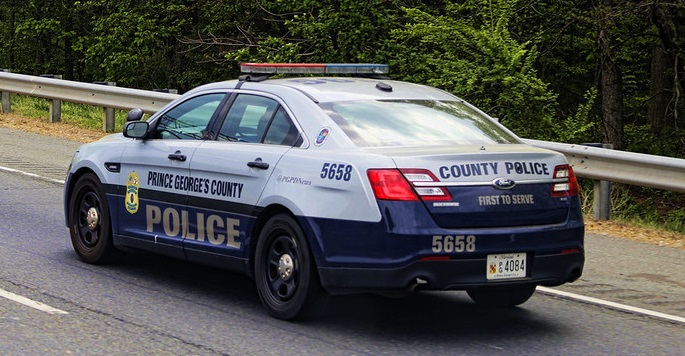By Megan Poinski
Megan@MarylandReporter.com
 Tripling the annual amount of the state’s tax credit for film production will create thousands of jobs and add tens of millions to the local economy, supporters of a bill to increase the tax credit to $22.5 million told a Senate committee Wednesday.
Tripling the annual amount of the state’s tax credit for film production will create thousands of jobs and add tens of millions to the local economy, supporters of a bill to increase the tax credit to $22.5 million told a Senate committee Wednesday.
A bill approved by the General Assembly last year recharged the tax credit, which had fallen to $1 million a year. That legislation keeps a $7.5 million tax credit going each year until 2014.
Budget and Tax Committee Chairman Edward Kasemeyer, the lead sponsor, said that last year’s bill was so successful, he wants to expand the program.
“We’ve been so successful that frankly, the shows that want to come here, in order to meet our commitments to them, we have to increase the credit and try to extend the sunset,” Kasemeyer said.
His bill increases the annual credit amount to $22.5 million, and extends the program until 2016.
The bill had no opposition during the hearing at Kasemeyer’s committee, and senators asked no questions.
Luring film productions
Film production tax credits are designed to lure different production companies to Maryland to film movies, television programs or commercials, or to work on digital or animated projects. The money Maryland invests in the program are expected to create larger revenues for the state as a whole through salaries, local trade, tourism, and international exposure.
Hannah Byron, assistant secretary for tourism, film and the arts at the Department of Business and Economic Development, said 2011’s tax credit increase brought the state five productions. These include seasons 1 and 2 of the not-yet-aired HBO comedy show “Veep,” seasons 1 and 2 of the still-in-production “House of Cards” series to be released by Netflix, two independent films, and “Game Change,” an HBO original movie about Sarah Palin and 2008 election campaign.
These productions, Byron said, brought the state $185 million in additional spending. They also created about 5,500 new jobs for film crews and actors.
Maryland has become a “go to” place for film production, Byron said, and the industry is likely to keep growing. However, she said, it needs money to keep expanding.
Filming in Harford County
Writer and producer Beau Williamson, who wrote the recent movie “The Ides of March” and who is working on “House of Cards,” said that Maryland’s tax incentive was what ultimately brought the series here. Most of the filming is being done on a Harford County sound stage.
“Maryland allowed us to maximize our budget and put money on the screen,” Williamson said. “Without those incentives, we could not afford to do it.”
In making just the first season of “House of Cards,” Williamson said that producers expect to spend $70 million in Maryland. He estimated that the state is nearly quadrupling its investment in the series. For every dollar in tax credits given to “House of Cards,” the production is spending $3.70 in the state.
Representatives from unions, actors and stunt performers, and local businesses also spoke in support of the bill.
John Latenser, a Maryland-based film location manager, said that he spent years working in other states when Maryland did not have a robust film incentive program. The re-energized incentive program enables him to work close to home, he said. And if the program is increased to $22.5 million annually, Latenser said that he and other professionals who work in film would get more work and do more for the state.
“We could make this state what it can be,” Latenser said.






As both a filmmaker and a native Marylander, I would like
to address the earlier comments. First, we absolutely do know that these productions
would NOT have come to Maryland without the tax credits. In Beau Willimon’s
address to the Senate Budget Committee, the writer and executive producer of
the new Kevin Spacey tv series, “House of Cards” said, “Those
incentives allow us to maximize our budget and create the highest quality work.
Without such an incentive we would not have been able to afford to shoot in
your state.” He is not alone. This same sentiment has been voiced by HBO in
bringing “Veep” to Maryland, and we know we lost a lot of movies in the past
because we offered no, or almost no, tax incentive. A state may offer many
wonderful elements, such as good crews and locations, and no doubt Maryland
provides both. However, if you don’t have the money to shoot in a particular
state, or if shooting in another state means you’ll have more money and time to
spend on the production, then the film and television studios will make the
decision to go to those areas. You don’t have to, nor would you ever want to,
give away too much, but you must be competitive or you will lose film business
— as you would in any business (same for the world of high-tech or large
scale manufacturing where states have to offer competitive taxes to attract
development). This lack of competitiveness, unfortunately, is what happened in
our state for far too many years.
Second, if the shows were produced elsewhere, yes they
would need film crews and actors — but not our film crews
and actors! They would hire in another state. It’s possible that some of our crew and actors might get hired in that other state, but
they’d have to leave Maryland to do it and our state would not get all the
various benefits that come with shooting a film or tv series here at home.
Third, the Harford County sound stage and other spaces
were empty. To date, and the series has not even begun filming any episodes as
yet, they have spent over $300,00 on restoring and improving three large
Maryland warehouses and office space. Additionally, the series has spent over
$600,000 already on construction materials, and over $200,000 on lodging. This
does not even take into account all the grocery stores, dry cleaners, gas
stations and restaurants they’ve pumped money into.
Fourth, and to respond to a common misconception, the
studies supporting the tax credits are not solely done by the Motion Picture
Association of America. Here in Maryland, a local company (the Sage Policy
Group) prepared an in-depth study [http://www.mdfilm.org/elements/uploads/2009_SAGE_Economic_Impact_Report.pdf]which
found there are clear and substantive benefits to having and increasing the
Maryland tax incentive program. The report discusses all the productions in
Maryland that were lost because we didn’t have a competitive incentive program.
I served on the volunteer Film Production Work Group, convened at the request
of the Maryland Legislature to study the issue and evaluate the benefits to the
state. The Workgroup was comprised of thirteen Maryland citizens, appointed by
the MD Dept. of Business & Economic Development, and representing a
cross-section of industries and perspectives, including labor, education, law,
tourism, economic development, film and government. We reviewed Maryland’s film
production incentive program, comparing it with production incentive programs
in other states. Our report [http://www.mdfilm.org/elements/uploads/Workgroup_Report.pdf] concluded
that Maryland was rapidly losing our crew base and numerous film opportunities
to other states because of the incentives available in those other states but
lacking in Maryland. Iconic Maryland filmmakers like Barry
Levinson and John Waters were priced out of shooting recent films in Maryland
because of the significant financial gap caused by the lack of incentives. We
were on the verge of gutting an industry that helps define us and brings a great
deal of opportunities to many of our people and our local businesses.
Finally, and this may be the most important point, the
state will NOT spend any money upfront. Not a dime. The incentive program is a
tax credit paid out AFTER the money flows in. Only AFTER a film or tv series
(1) comes to Maryland; (2) shoots and lives in Maryland; (3) spends documented
money in Maryland, and then; (4) fills out a comprehensive accounting of the
money they spent in Maryland does the state pay the proportional incentive. In
the meantime, the money flows into our state, people are employed (both those
who directly work on the film/tv show and those indirectly supported by the
production such as restaurants, hotels, cabs and various stores), and the state
earns returns (i.e. interest) on the money and taxable revenues brought into
Maryland.
Thank
you,
Sig Libowitz, local filmmaker and attorney
Member of the Maryland Film Industry Coalition; a local,
volunteer group
Second, if the shows were produced elsewhere, yes they
would need film crews and actors — but not our film crews
and actors! They would hire in another state. It’s possible that some of our crew and actors might get hired in that other state, but
they’d have to leave Maryland to do it and our state would not get all the
various benefits that come with shooting a film or tv series here at home.
Third, the Harford County sound stage and other spaces
were empty. To date, and the series has not even begun filming any episodes as
yet, they have spent over $300,00 on restoring and improving three large
Maryland warehouses and office space. Additionally, the series has spent over
$600,000 already on construction materials, and over $200,000 on lodging. This
does not even take into account all the grocery stores, dry cleaners, gas
stations and restaurants they’ve pumped money into.
Fourth, and to respond to a common misconception, the
studies supporting the tax credits are not solely done by the Motion Picture
Association of America. Here in Maryland, a local company (the Sage Policy
Group) prepared an in-depth study [http://www.mdfilm.org/elements/uploads/2009_SAGE_Economic_Impact_Report.pdf]which
found there are clear and substantive benefits to having and increasing the
Maryland tax incentive program. The report discusses all the productions in
Maryland that were lost because we didn’t have a competitive incentive program.
I served on the volunteer Film Production Work Group, convened at the request
of the Maryland Legislature to study the issue and evaluate the benefits to the
state. The Workgroup was comprised of thirteen Maryland citizens, appointed by
the MD Dept. of Business & Economic Development, and representing a
cross-section of industries and perspectives, including labor, education, law,
tourism, economic development, film and government. We reviewed Maryland’s film
production incentive program, comparing it with production incentive programs
in other states. Our report [http://www.mdfilm.org/elements/uploads/Workgroup_Report.pdf] concluded
that Maryland was rapidly losing our crew base and numerous film opportunities
to other states because of the incentives available in those other states but
lacking in Maryland. Iconic Maryland filmmakers like Barry
Levinson and John Waters were priced out of shooting recent films in Maryland
because of the significant financial gap caused by the lack of incentives. We
were on the verge of gutting an industry that helps define us and brings a great
deal of opportunities to many of our people and our local businesses.
Finally, and this may be the most important point, the
state will NOT spend any money upfront. Not a dime. The incentive program is a
tax credit paid out AFTER the money flows in. Only AFTER a film or tv series
(1) comes to Maryland; (2) shoots and lives in Maryland; (3) spends documented
money in Maryland, and then; (4) fills out a comprehensive accounting of the
money they spent in Maryland does the state pay the proportional incentive. In
the meantime, the money flows into our state, people are employed (both those
who directly work on the film/tv show and those indirectly supported by the
production such as restaurants, hotels, cabs and various stores), and the state
earns returns (i.e. interest) on the money and taxable revenues brought into
Maryland.
Thank
you,
Sig Libowitz, local filmmaker and attorney
Member of the Maryland Film Industry Coalition; a local,
volunteer group
Have you ever noticed how every Maryland State effort to create jobs includes a tax break? The lesson here is clear—taxes in Maryland are too high, and creating jobs means lowering our taxes. Also eliminating excessive fees and regulations wouldn’t hurt. The Governor and General Assembly are addicted to spending. The only solution is to vote this group of bums out of office.
“Hannah Byron, assistant secretary for tourism, film and the arts at
the Department of Business and Economic Development, said 2011’s tax
credit increase brought the state five productions… These productions, Byron said, brought the state $185 million in
additional spending. They also created about 5,500 new jobs for film
crews and actors.”
Since we cannot know if those productions would have come to MD without the subsidy, there is no way we can conclude with confidence that the tax credit is was brought them here. Furthermore, Byron’s statement assumes that the shows would not have been produced (and thus the jobs not created) if not for the state’s tax credit. That’s illogical–even if the shows were produced elsewhere, the film crews and actors would still be needed.
These film subsidies virtually never create economic activity, they simply shift it from one state to another. Finally, are we to assume that the Harford county sound stage would have sat empty if these shows had not been filmed here? The studies supporting these tax credits are funded by the Motion Picture Association of America – big surprise that they claim absurdly large economic benefits.
It’s no surprise to hear that a writer and producer is happy to have the State of Maryland offering him tax credits. What is surprising is that in the current fiscal climate, the General Assembly somehow thinks it’s okay to send $20+ million a year to Hollywood while raising taxes and cutting services.
The State puts up 0 money-Only AFTER the production spends millions of dollars, proves it with receipts, documentation, etc, the state gives them a 20% refund. Meanwhile, the state collects income tax from everyone paid, tax from every vendor, hotel room, meal, piece of lumber, parking revenue, permit fees, furniture buying, equipment rental, paint purchased. The movie pays money to every individual or business where it films, in addition to the churches/rec centers where the crew eats, parking lots where they park. Grocery stores and food vendors get the revenue created by feeding 150 people a day, 5 days a week. The benefits of this are enormous. The drawbacks (tying up traffic where filming is taking place, giving 20 cents for every dollar spent back), are minimal. This is a no brainer.
GO FOR THE JOBS………..MIKE